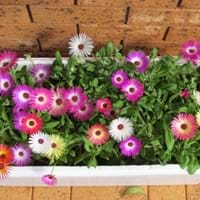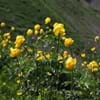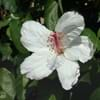Life Span
Annual
Perennial
Type
Flowering Plants
Flowering Plants, Fruits, Trees
Origin
South Africa
Central America, Europe, North America
Types
it is a type of daisy
Not Available
Habitat
Humid climates, Warmer regions
Hedge, Scrubs, Woods
USDA Hardiness Zone
Not Available
4-8
AHS Heat Zone
9 - 1
Not Available
Sunset Zone
A2, 1a, 1b, 2a, 2b, 3a, 3b, 4, 5, 6, 7, 8, 9, 10, 11, 12, 13, 14, 15, 16, 17, 18, 19, 20, 21, 22, 23, 24
Not Available
Habit
Prostrate/Trailing
Not Available
Flower Color Modifier
Bicolor
Not Available
Leaf Color in Spring
White, Lime Green, Ivory
Dark Green
Leaf Color in Summer
White, Lime Green, Ivory
Green
Leaf Color in Fall
White, Lime Green, Ivory
Brown, Green, Light Yellow
Leaf Color in Winter
Light Green
Not Available
Leaf Shape
Long Linear
Oblong
Plant Season
Spring, Summer, Fall, Winter
Summer
Sunlight
Full Sun, Partial Sun, Partial shade
Full Sun, Partial shade
Type of Soil
Loam, Sand
Loamy
The pH of Soil
Acidic, Neutral, Alkaline
Neutral
Soil Drainage
Well drained
Well drained
Bloom Time
Spring, Late Spring, Early Summer, Early Fall, Fall, Late Fall, Early Winter
Fall, Summer
Tolerances
Drought
Drought
Where to Plant?
Container, Ground, Pot
Ground
How to Plant?
Seedlings
Grafting, Seedlings, Transplanting
Plant Maintenance
Medium
Medium
Watering Requirements
Requires regular watering
Medium
In Summer
Ample Water
Lots of watering
In Spring
Average Water
Moderate
In Winter
Average Water, Ample Water
Average Water
Soil pH
Neutral, Slightly Acidic
Neutral
Soil Type
Loam, Sand
Loamy
Soil Drainage Capacity
Well drained
Well drained
Sun Exposure
Full Sun, Partial shade, Partial Sun
Full Sun, Partial shade
Pruning
No pruning needed
Prune when plant is dormant, Remove dead or diseased plant parts
Fertilizers
All-Purpose Liquid Fertilizer
All-Purpose Liquid Fertilizer
Pests and Diseases
Not Available
Aphids, Curculio occidentis, Japanese Beetles, Leaf Rollers, Leafminer, Mites, Red blotch, sawflies, Scale, Stink bugs
Plant Tolerance
Drought
Drought
Flower Petal Number
Single
Single
Foliage Texture
Medium
Medium
Foliage Sheen
Glossy
Matte
Attracts
Not Available
Not Available
Allergy
Not Available
Digestive Problems, Respiratory problems
Aesthetic Uses
Beautification, Showy Purposes
Showy Purposes
Beauty Benefits
Not Available
Beautiful Skin
Environmental Uses
Air purification
Food for birds
Medicinal Uses
No Medicinal Use
Anthelmintic, Antibacterial, Astringent, Hypnotic, Laxative, Refrigerant
Part of Plant Used
Flowers
Fruits
Other Uses
Used as Ornamental plant
Edible syrup, Jam, Jelly, Used As Food
Used As Indoor Plant
No
No
Used As Outdoor Plant
Yes
Yes
Garden Design
Bedding Plant, Groundcover
Not Available
Botanical Name
DOROTHEANTHUS bellidiformis
Malus sylvestris
Common Name
Livingstone Daisy, Mezoo Trailing Red Livingstone Daisy
European crab apple
In Hindi
Livingstone Daisy
european crab apple
In German
Livingstone Daisy
Der Holzapfel, Europäischer Wildapfel
In French
Livingstone daisy
Le Boquettier, le Pommier sauvage ou Pommier des bois
In Spanish
Livingstone daisy
Malus sylvestris, el Manzano silvestre, manzano silvestre europeo
In Greek
Λίβινγκστον μαργαρίτα
Ευρωπαϊκή μήλο καβουριών
In Portuguese
Livingstone daisy
Malus sylvestris
In Polish
Livingstone daisy
Jabłoń dzika
In Latin
Livingstone primula
european crab apple
Phylum
Not Available
Magnoliophyta
Class
Not Available
Magnoliopsida
Order
Caryophyllales
Rosales
Family
Aizoaceae
Rosaceae
Genus
Dorotheanthus
Malus
Clade
Angiosperms, Core eudicots, Eudicots
Angiosperms, Eudicots, Rosids
Tribe
Not Available
Not Available
Subfamily
Ruschioideae
Not Available
Number of Species
Not Available
Not Available
Importance of Livingstone Daisy and European Crab Apple
Want to have the most appropriate plant for your garden? You might want to know the importance of Livingstone Daisy and European Crab Apple. Basically, these two plants vary in many aspects. Compare Livingstone Daisy and European Crab Apple as they differ in many characteristics such as their life, care, benefits, facts, etc. Every gardener must at least have the slightest clue about the plants he wants to plant in his garden. Compare their benefits, which differ in many ways like facts and uses. The medicinal use of Livingstone Daisy is No Medicinal Use whereas of European Crab Apple is Anthelmintic, Antibacterial, Astringent, Hypnotic, Laxative and Refrigerant. Livingstone Daisy has beauty benefits as follows: Not Available while European Crab Apple has beauty benefits as follows: Not Available.
Compare Facts of Livingstone Daisy vs European Crab Apple
How to choose the best garden plant for your garden depending upon its facts? Here garden plant comparison will help you to solve this query. Compare the facts of Livingstone Daisy vs European Crab Apple and know which one to choose. As garden plants have benefits and other uses, allergy is also a major drawback of plants for some people. Allergic reactions of Livingstone Daisy are Not Available whereas of European Crab Apple have Digestive Problems and Respiratory problems respectively. Having a fruit bearing plant in your garden can be a plus point of your garden. Livingstone Daisy has no showy fruits and European Crab Apple has showy fruits. Also Livingstone Daisy is not flowering and European Crab Apple is flowering. You can compare Livingstone Daisy and European Crab Apple facts and facts of other plants too.





